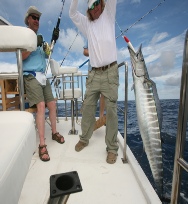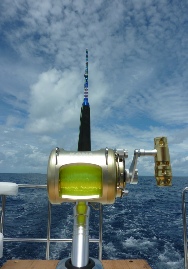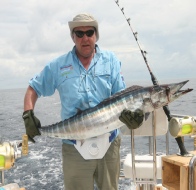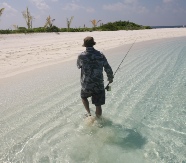© 2014 Gary Smith Fishing Ltd All Rights Reserved










Proudly Associated With


When I am fishing the stillwaters here on calm days I always see lots of evidence of fish feeding off the surface. Fly fishing of course is the obvious answer here but if you are not experienced in this form of fishing then what are the alternatives? A bubble float and sliding rig are two simple answers to letting your bait float on the surface. This is a very simple and basic method of fishing but in these days of high tech rigs going back to basics can prove very effective.
The bubble float method is simply a float that when filled with water acts as a casting weight ensuring your bait can presented at distance away from the bank. Take a bubble float and on the top you will see two plugs, pull them out so they let water in one side and expel air on the other. Fill with water and replace the plugs. On each side of the bubble float are eyes cast into the plastic. Clip a small swivel clip to these and tie one to the main line. Some people just tie the line to the eye without a swivel but I worry the initial take, if fierce, will snap the line as it is not tied around a smooth round surface. The bubble float eye casting can be very rough and this would be enough to severely damage a line in my mind. You may have to spread a swivel clip to get it through the eye of a small bubble float but time spent now preparing the rig correctly will save tears later, believe me! Now all that is needed is to tie a hook length of maybe one metre to the other side swivel eye. Load your bait and cast out, feathering the line as it comes off the reel just before it hits the water, to avoid tangles. To feather the cast put the index or middle finger of your rod hand on the side of the spool to slow the speed of the line as it leaves the reel. The float will drift along the swim trailing the baited hook a metre away on the surface. Bread is particularly good for this kind of fishing on a size ten to sixteen hook depending on what fish may be present.
The bubble float method is simply a float that when filled with water acts as a casting weight ensuring your bait can presented at distance away from the bank. Take a bubble float and on the top you will see two plugs, pull them out so they let water in one side and expel air on the other. Fill with water and replace the plugs. On each side of the bubble float are eyes cast into the plastic. Clip a small swivel clip to these and tie one to the main line. Some people just tie the line to the eye without a swivel but I worry the initial take, if fierce, will snap the line as it is not tied around a smooth round surface. The bubble float eye casting can be very rough and this would be enough to severely damage a line in my mind. You may have to spread a swivel clip to get it through the eye of a small bubble float but time spent now preparing the rig correctly will save tears later, believe me! Now all that is needed is to tie a hook length of maybe one metre to the other side swivel eye. Load your bait and cast out, feathering the line as it comes off the reel just before it hits the water, to avoid tangles. To feather the cast put the index or middle finger of your rod hand on the side of the spool to slow the speed of the line as it leaves the reel. The float will drift along the swim trailing the baited hook a metre away on the surface. Bread is particularly good for this kind of fishing on a size ten to sixteen hook depending on what fish may be present.
Another simple rig for surface float fishing is the sliding controller rig. This consists of a controller float which has an eye in the top, a bead, a double eye swivel and a hook length. Thread the main line through the eye at the top of the controller float then thread a bead, large enough so that it will not pass through the eye of the float, but small enough so that it will not pass over the swivel. Tie a swivel to the end of the main line and a hook length to the other side of the swivel. Cast out and wait for a take. When the bait is taken the float does not pull under the water as the line passes freely through the eye on top. The line should be able to run very easily through the eye so there is no resistance felt by a taking fish. When the float starts to slide across the water - strike. The fish is on!
You can experiment with both these rigs using different baits. There are no hard and fast rules, what works one day will maybe not work the next. Weather conditions and water temperature have a lot to do with what bait will suit the fish on certain days. It is of course a known fact that fish are more likely to follow the wind to feed, therefore if you are facing the wind you stand a greater chance. It is all a great learning curve. I personally find it useful to take notes when I go fishing. Not just for journalism, but because we forget very quickly. Making a note of the weather, wind direction, bait used, fish caught etc. can be very useful information when you visit a water a year or so later.
Copyright © Gary Smith
Back
| Address |
| Contact Us |
